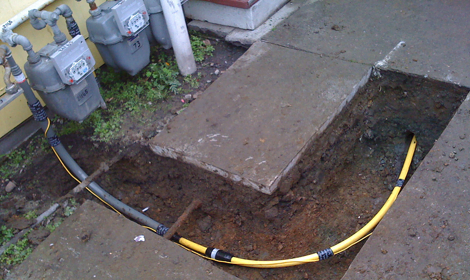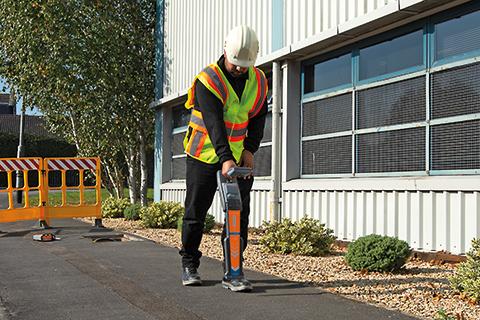▲ Number of probe holes
The number of exploratory holes depends on the stratigraphic conditions at the planned crossing site and trenchless horizontal directional drilling length of the crossing. If the crossing length is 300 m (1000 FT), one borehole on each side of the crossing site is sufficient, and if the borehole results indicate that the geology of the area is relatively homogeneous, further drilling and sampling is not necessary. If the exploration report indicates that the geological conditions in the area are more complex, or if rocks or coarse sand layers are found to exist, further detailed geological investigations are required. If coarse sand, pebbles, weathered rocks or hard rocks are present during long distance large diameter crossing construction, sampling should be done every 180m —-240m (600 – 800FT), and if there are clear signs that the geological structure is unusually complex, then more geological exploratory holes need to be drilled for more sampling work. All sampling probe holes should be along the direction of the traverse section and the sampling depth should be based on the planned traverse depth. If possible, sampling probe holes are best selected at approximately 8 m (25 FT) on the side of the crossing median. After completion of the exploration task, the exploratory holes must be sealed to prevent mud leakage during the construction process.
▲ Probe hole depth
All holes should be drilled to a minimum depth of 12 m (40 FT) below the crossing point or 6 m (20 FT) below the intended crossing depth, whichever is greater. Sometimes it is beneficial for both the contractor and the owner to set the traverse depth deeper or to have the actual traverse curve deeper than the designed location, but it is critical that the traverse location be chosen in a formation that is structurally consistent and conducive to hole formation for a successful traverse.
▲ Standard classification of soils
A qualified geotechnician or geologist should be able to classify materials according to the Unified Soil Classification System or ASTM design letters D-2487 and D2488. It will be beneficial to have a field boring log from the field technician or drilling company that includes a visual classification of the material and an interpretation and evaluation of the formation structure by the drilling company based on the sampling results.
▲ Standard puncture test
SPT To better determine the density of granular materials, geologists typically perform the Standard Penetration Test SPT according to ASTM Specification D1586, a field test method that uses a standard weight weighted hammer to drive a scoop sampler into the soil at a certain depth, recording the number of strokes to a depth of 12 inches. The data obtained is the standard puncture resistance value and can be used to estimate the relative density of the non-polymerized soil at the test site. Some drilling companies also choose to conduct this test on a small scale in areas of consolidated soil or rock to confirm the consistency of the dense soil and the hardness of the rock.
▲ Coring and sampling method
Most geological exploration companies prefer to use coring samplers to obtain samples from subsurface cores, and these tests are generally performed in accordance with ASTM Specification D-1587. These tests are similar to the standard penetration tests described above, except that the sampler is a thin-walled, flawless steel cylinder with a sharp cutting edge that is hydraulically driven. The required hydraulic values can be found in the field records, and this method allows a relatively complete sample to be taken for more detailed laboratory analysis. Samples can be analyzed in the field using a hand-held puncturer, and for directional traverses, a cutting spoon sampler as described above is usually sufficient for construction needs.
▲ Granularity analysis
Sieve analysis of samples for granularity is a mechanical test performed on granular material obtained at the construction site with a cut scoop sampler. These samples are sent to the test laboratory, and after passing through a series of screens, the percentage of different particle sizes is derived based on their size and weight, which is one of the most important tests.
▲ Rock condition
If the presence of a rock formation is discovered during a soil survey, the rock type, relative hardness and non-limiting compression strength must be determined by a professional exploration company using a diamond drill core barrel for a typical core sample diameter of 50 mm (2 inches). Rock type is classified by geologists based on the quality of the rock in relation to the total core length, rock hardness is based on a comparison of the rock with ten materials of known hardness, and compression strength is obtained by precise measurement of the core followed by a compression test. These data are physical parameters of the rock, which allow to determine the type of traversing equipment and drill bit to be used, and to estimate the traversing distance.


